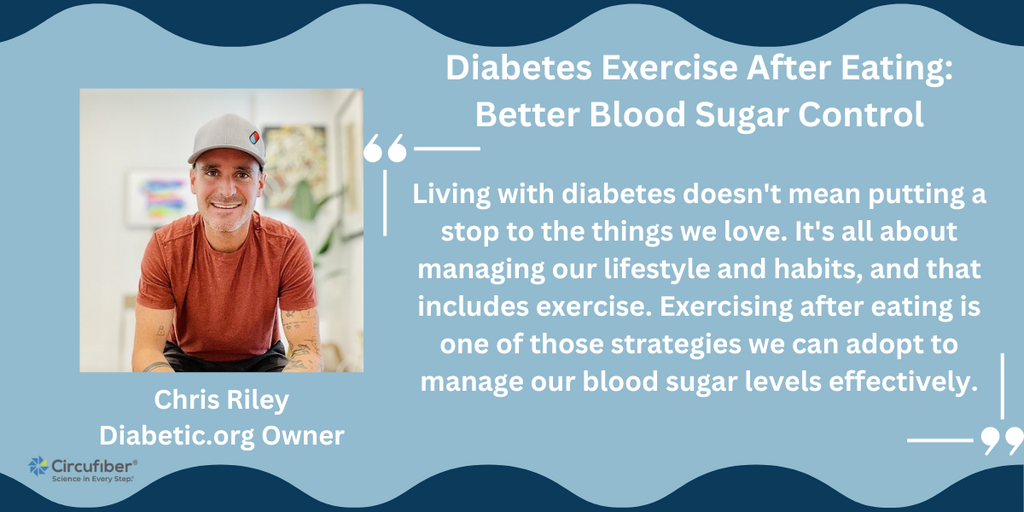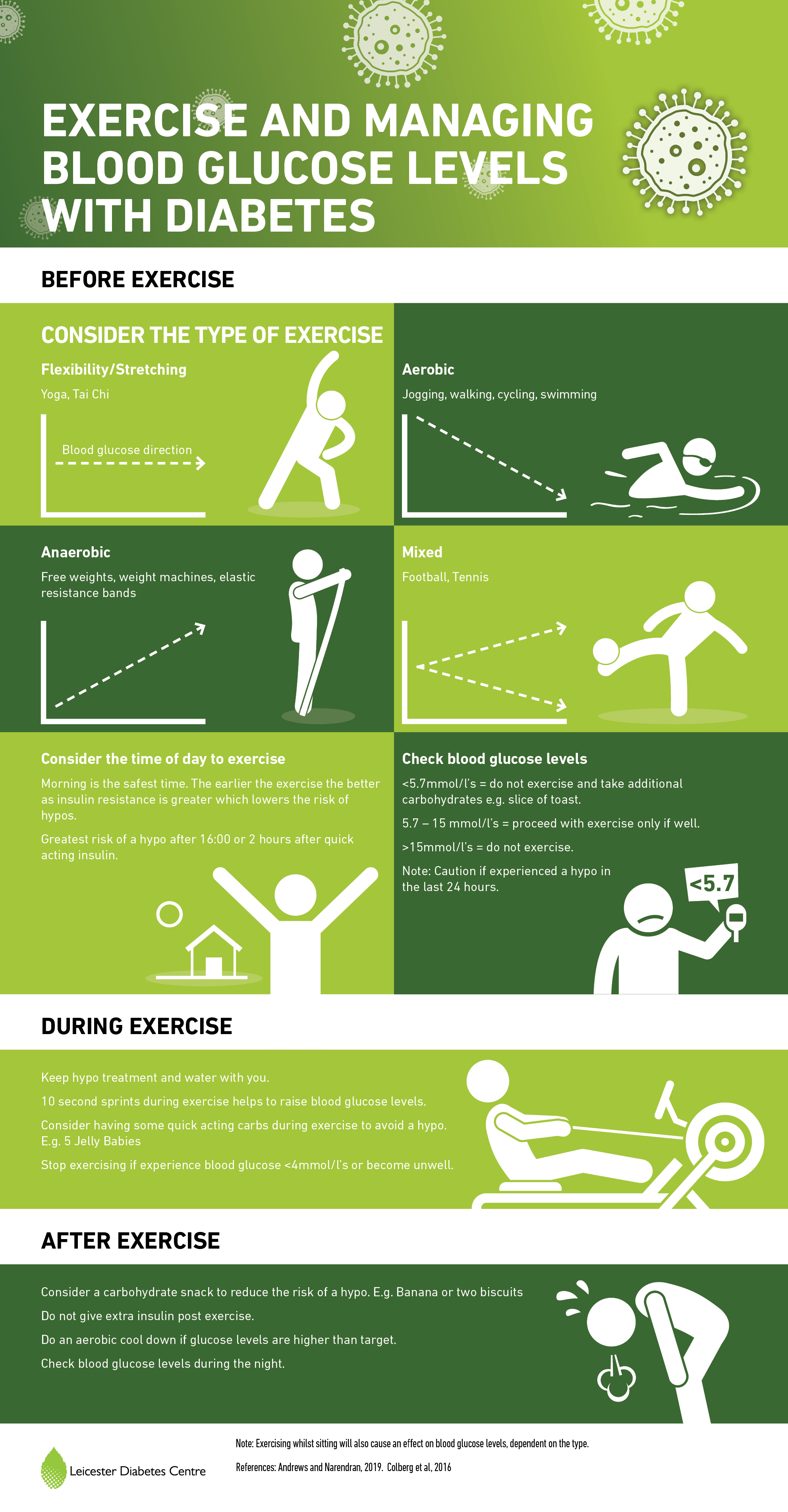Medically Reviewed by:Scientific Advisory Board
Living with diabetes doesn't mean putting a stop to the things we love. It's all about managing our lifestyle and habits, and that includes exercise. Exercising after eating is one of those strategies we can adopt to manage our blood sugar levels effectively. 
We're well aware of how regular physical activity is beneficial for everyone, particularly for individuals living with diabetes. It helps lower blood glucose levels, reduces cardiovascular risk factors, boosts mood, and enhances overall quality of life.
But when it comes to timing your exercise in relation to meals, things can get a bit tricky. We've got good news though - recent findings suggest working out after meals might be particularly advantageous for people with type 2 diabetes.
Understanding Diabetes: The Basics
We're diving headfirst into the world of diabetes, a chronic condition affecting millions worldwide. It's crucial to understand what this disease is and how it works before we delve into the specific topic of exercise post-meal for people with diabetes.
In its simplest form, diabetes is a disorder that affects how your body uses glucose or sugar. We all need sugar – it's what fuels our cells and keeps us going. But in those with diabetes, there's too much sugar circulating in their blood. This happens because either the body doesn't produce enough insulin (Type 1), resists the effects of insulin (Type 2), or both.
There are three main types of diabetes – Type 1, Type 2, and gestational diabetes:
- Type 1 Diabetes: Often diagnosed in children and young adults, those with type 1 diabetes do not make insulin because their immune system attacks and destroys the cells that create insulin.
- Type 2 Diabetes: The most common type where your body does not use insulin properly which is also known as insulin resistance.
- Gestational Diabetes: Occurs during pregnancy but typically resolves after giving birth.
The symptoms can vary but often include increased thirst, frequent urination, hunger, fatigue and blurred vision. If you've noticed these signs persisting over time, it's worth getting checked out by a healthcare professional.
Managing one’s blood sugar levels becomes a daily task for individuals living with this condition. Regular monitoring helps keep things under control but lifestyle modifications like diet alterations become equally crucial - one such aspect being mindful about exercising particularly after meals.
The Role of Exercise in Managing Diabetes
We're often told exercise is a silver bullet for many health woes. It's no different when we talk about diabetes. Regular physical activity plays a crucial part in managing both type 1 and type 2 diabetes. Let's dive deeper into how it works.
Exercise has a direct impact on our blood glucose levels, you see. When we move our bodies, our muscles need more energy and they get this from glucose in the blood stream. This means that as we exercise, the level of sugar in our blood can drop significantly making it an effective way to manage high blood sugar levels common with diabetes.
To provide some context here, let's look at some numbers:
| Activity | Average Decrease in Blood Glucose Level |
|---|---|
| Walking (20 mins) | 10-20 mg/dL |
| Cycling (30 mins) | 20-30 mg/dL |
| Swimming (30 mins) | 20-40 mg/dL |
Now these are average figures and everyone is different so don't expect exactly these results every time you exercise but it gives us a general idea of how much difference movement can make.
It's not just about immediate effects either. Regular workouts help improve your body’s sensitivity to insulin which is key for people dealing with diabetes where their body either doesn't produce enough insulin or doesn't use it effectively. By enhancing insulin sensitivity, your cells are better able to use any available insulin to take up glucose during and after activity.
Physical activity also helps maintain a healthy weight and combat heart disease – two things incredibly important for those living with diabetes since they have higher risks related to obesity and cardiovascular issues.
The role of exercise in managing diabetes isn't just substantial; it's pivotal. However remember, before starting any new exercise regime, always consult with your healthcare provider. Every body is unique and what works for one might not work for another. So, keep exploring until you find an exercise routine that suits you best, and then stick with it.
Optimal Time for Exercising with Diabetes: Post-Meal Benefits
Regular physical activity plays a crucial role in managing blood glucose levels. It can increase insulin sensitivity and help your muscles use glucose more effectively. This effect can last up to 24 hours or more after exercise, leading to improved overall blood sugar control.
Exercising after eating has been shown to have several benefits for those with diabetes:
- Blood Sugar Control: After you eat, your blood sugar levels rise as the carbohydrates are broken down into glucose. Exercising post-meal can help use up this glucose and prevent spikes in blood sugar levels.
- Improved Digestion: Physical activity aids digestion and helps move along food through the digestive system more swiftly.
- Lower Heart Risk: Regular exercise reduces LDL (bad cholesterol) while increasing HDL (good cholesterol), thus lowering the risk of heart diseases – a common ailment among diabetic individuals.
Timing also matters. The optimal time window for post-meal exercise varies between individuals due to factors like age, fitness level, type of diabetes, etc., but generally falls within 30 minutes to an hour after eating.
Let's look at some numbers:
| Benefit | Percent Improvement |
|---|---|
| Blood Sugar Control | Up to 22% decrease in post-meal blood sugars |
| Improved Digestion | Helps reduce occurrence of gastroparesis by around 37% |
| Lower Heart Risk | Roughly 15% lower risk |
Exercise isn't just about losing weight or building muscle; it's a critical part of managing diabetes too. And when you time it right, the benefits are even greater. So why not lace up those sneakers and take a walk after your next meal? Your body will thank you for it.

Case Study: Impact of After-Eating Workouts on Blood Sugar Levels
We've all heard it before, "exercise is good for you". But what happens when we combine exercise with eating? Specifically, how does working out after meals affect our blood sugar levels? Taking a deep dive into some real-life cases will provide us with the answers.
There's been an interesting study conducted by the University of Michigan. They found that light physical activity such as walking for 15 minutes after each meal significantly lowered blood sugar levels in people suffering from prediabetes. To put this into perspective:
| Activity | Blood Sugar Reduction |
|---|---|
| 15-minute post-meal walk | -12% |
It's clear to see, then, that even modest exercise can have a profound impact on our bodies' ability to regulate glucose.
Another case worth mentioning involved participants who performed resistance training exercises after dinner. The results were eye-opening. Compared to those who didn't exercise post-meal, these individuals saw their blood sugar level decreased by 23% over the course of the next hour.
- Resistance Training Post Dinner: -23%
These findings underscore the importance of incorporating some form of physical activity into your routine right after meals. Not only can it help control diabetes but also enhances overall health and well-being. Let's consider a study published in Medicine & Science in Sports & Exercise journal. This research highlighted that post-dinner workouts led to better glucose control than pre-dinner exercises or no workout at all.
Evidence strongly suggests that exercising after eating can play a pivotal role in managing blood sugar levels - an essential factor for individuals dealing with diabetes. While more research is needed to further understand these effects across different population groups and activities, early indications are certainly promising.
Conclusion: Balancing Diet, Exercise and Diabetes
We've delved into the importance of exercise after eating for people with diabetes. It's now clear that activities, whether it's a brisk walk or cycling, can make a significant difference in blood sugar control.
Exercise is only one part of the equation though. A balanced diet also plays an essential role in managing diabetes. Consuming meals rich in fiber, lean protein and healthy fats can help maintain steady blood glucose levels.
| Key Components | Importance |
|---|---|
| Exercise | Helps lower post-meal blood glucose levels |
| Balanced Diet | Maintains steady overall glucose levels |
Coupling diet and exercise can seem challenging but incorporating small changes makes it manageable. Here are a few tips:
- Start slow – If you're new to exercising regularly, begin with light activities such as walking.
- Plan your meals – Ensure they are well-balanced and portion controlled.
- Monitor your glucose level – Keep track before and after meals, this will help adjust your routine accordingly.
We cannot overstate the significance of regular check-ups with healthcare providers. They'll provide personalized advice based on your health condition.
The journey towards better diabetes management is not always straightforward. There may be hurdles along the way but remember, it's about progress not perfection. With consistent effort and perseverance, we believe everyone can achieve their health goals.
References, Studies and Sources:
https://www.cdc.gov/diabetes/managing/active.html
More About Circufiber.com and Healthcare disclaimer:
Always consult your physician before beginning any program. This general information is not intended to diagnose any medical condition or to replace your healthcare professional. If you experience any pain or difficulty, stop and consult your healthcare provider. Circufiber.com socks are clinically proven to improve micro-circulation in feet and lower extremities in people with Diabetes.
More Author Information:
Chris is one of the Co-Founders of Diabetic.org. An entrepreneur at heart, Chris has been building and writing in consumer health for over 10 years. In addition to Diabetic.org, Chris and his Acme Health LLC Brand Team own and operate Pharmacists.org, Multivitamin.org, PregnancyResource.org, and the USA Rx Pharmacy Discount Card powered by Pharmacists.org.
Chris has a CFA (Chartered Financial Analyst) designation and is a proud member of the American Medical Writer’s Association (AMWA), the International Society for Medical Publication Professionals (ISMPP), the National Association of Science Writers (NASW), the Council of Science Editors, the Author’s Guild, and the Editorial Freelance Association (EFA).




